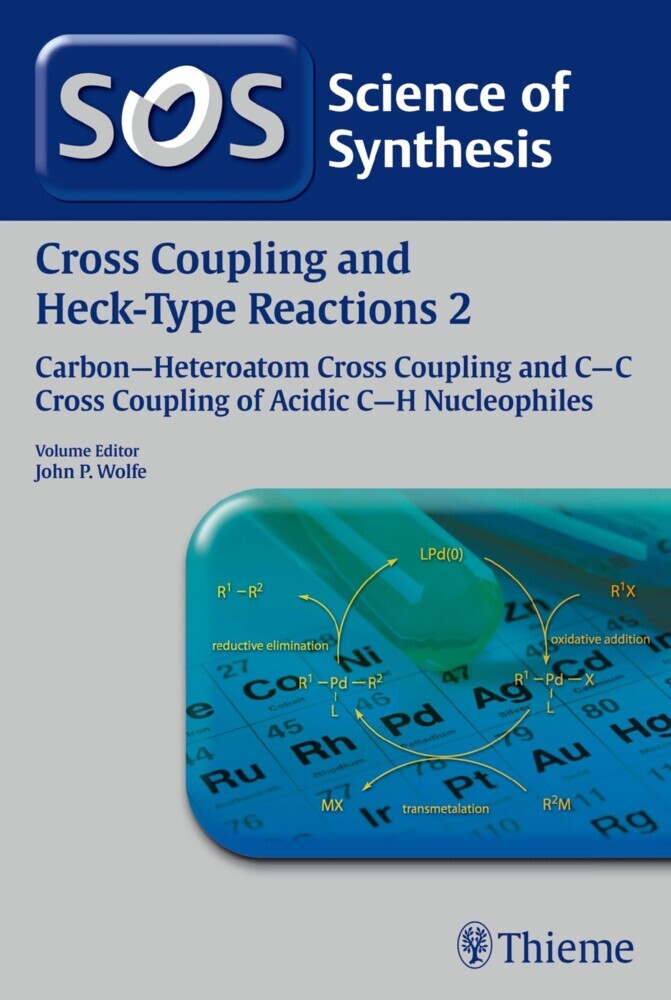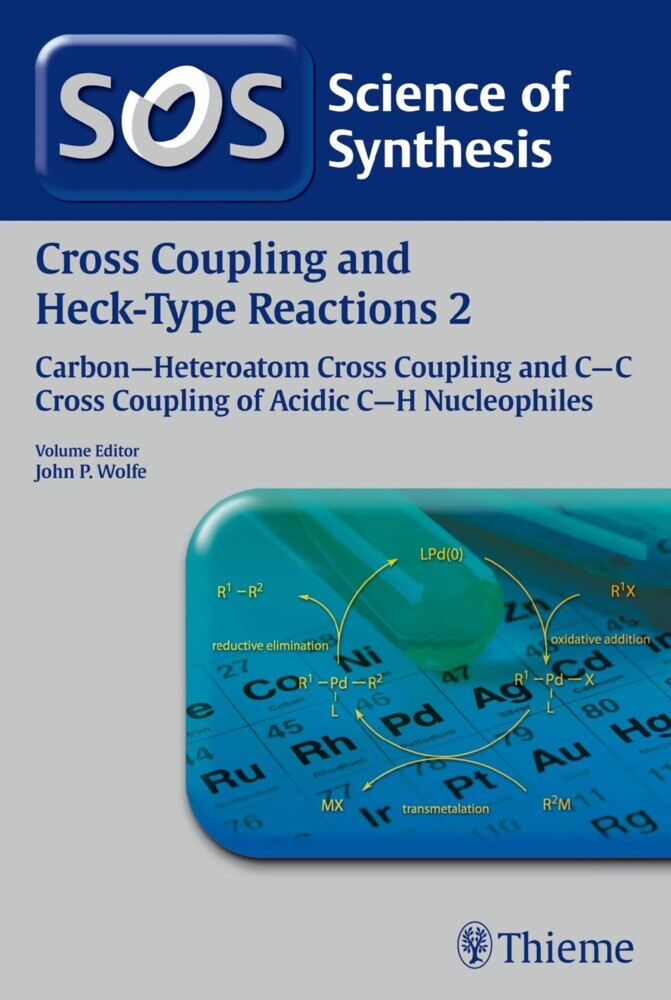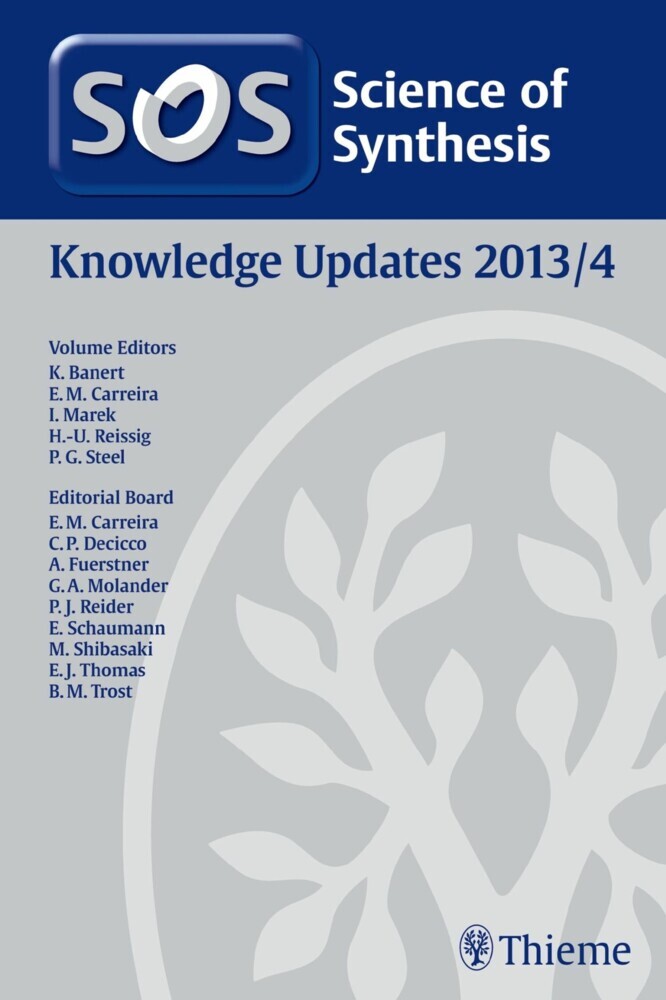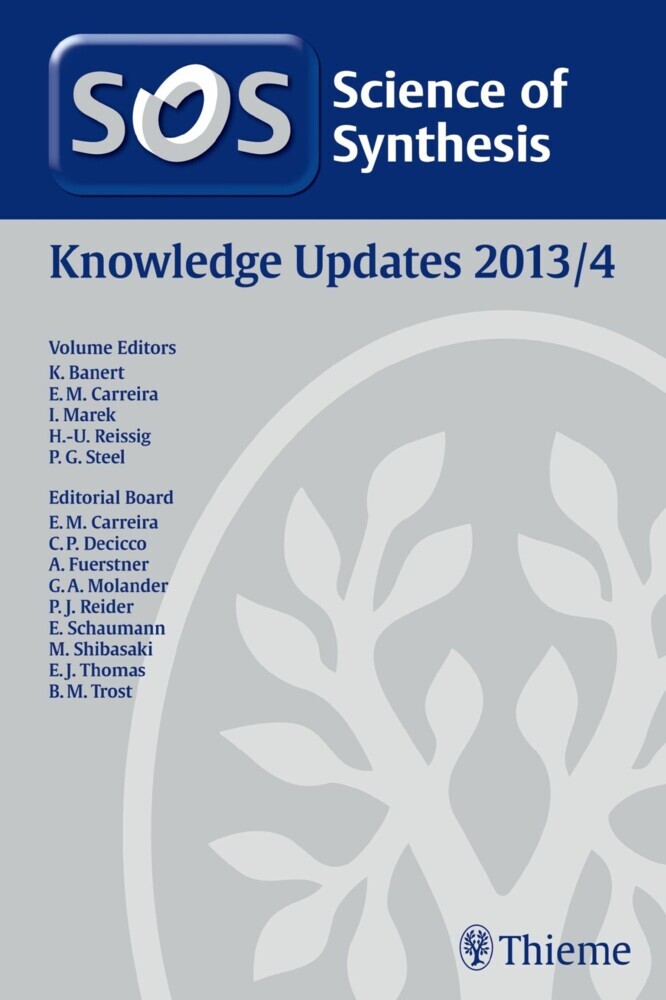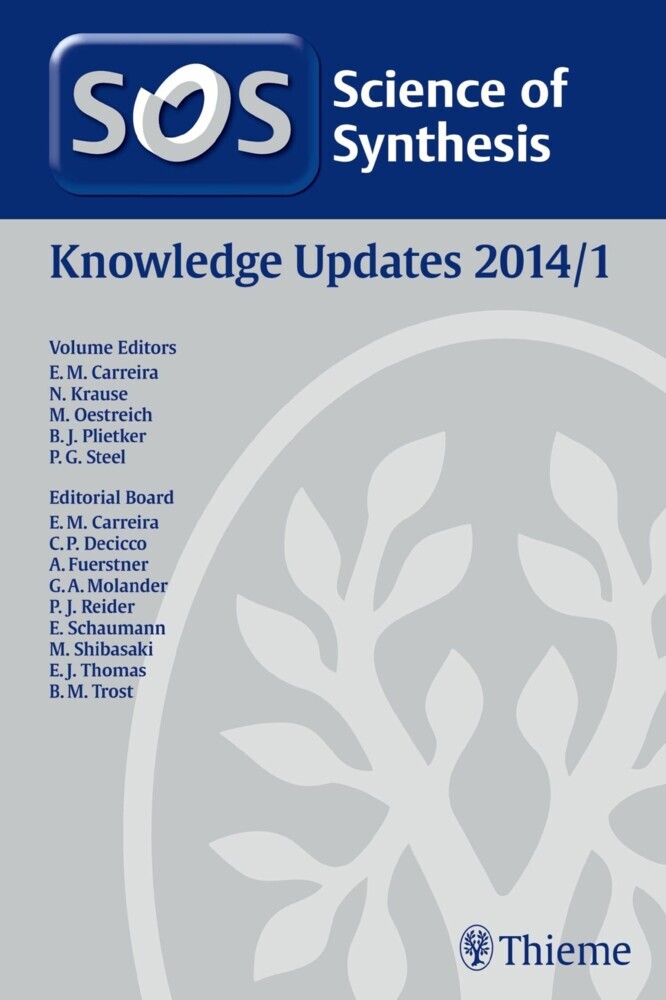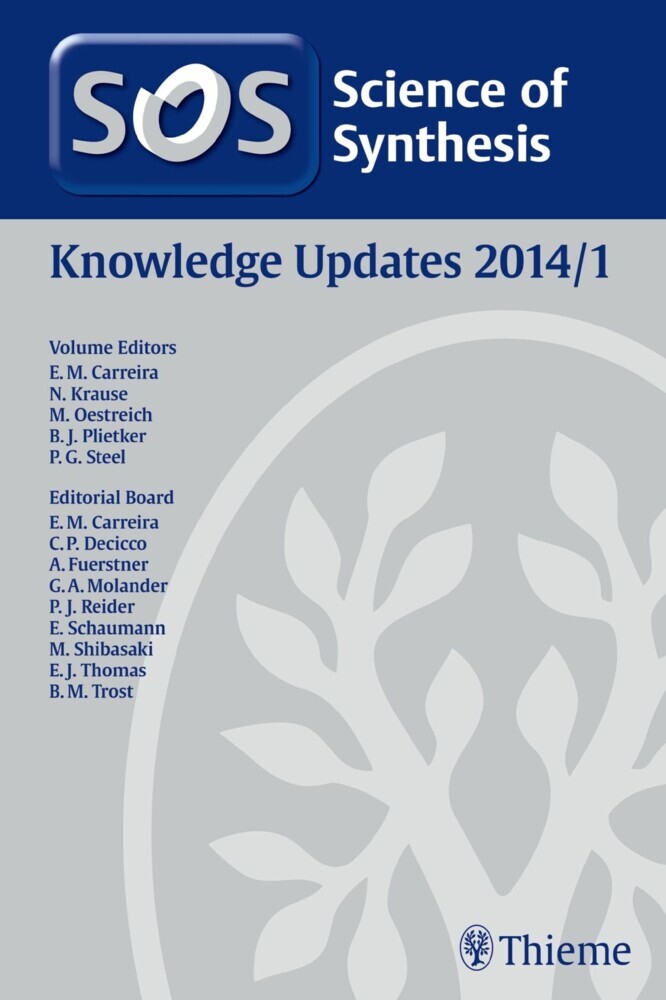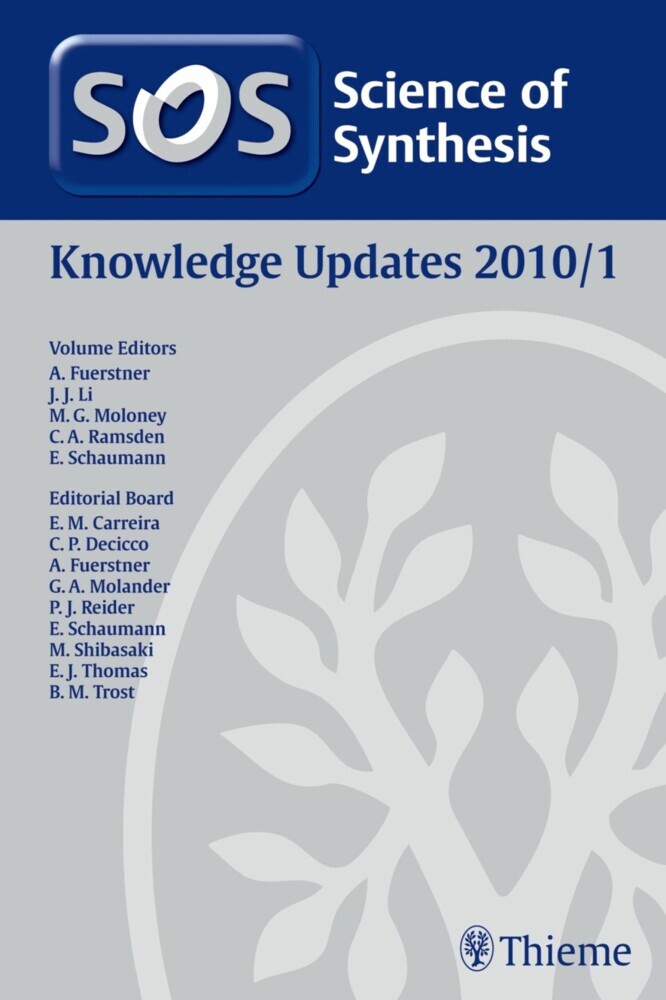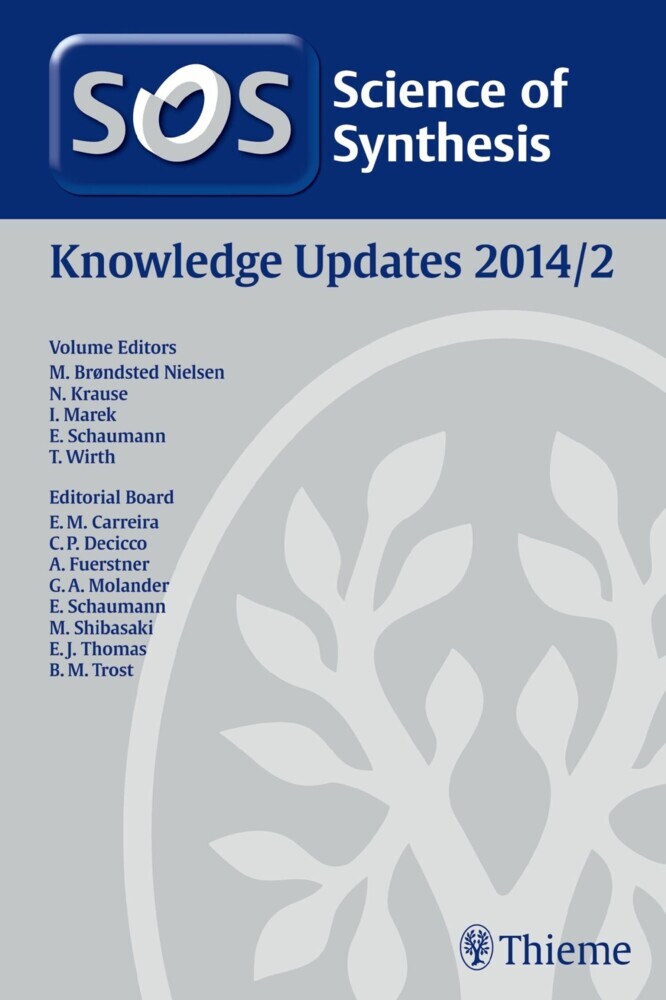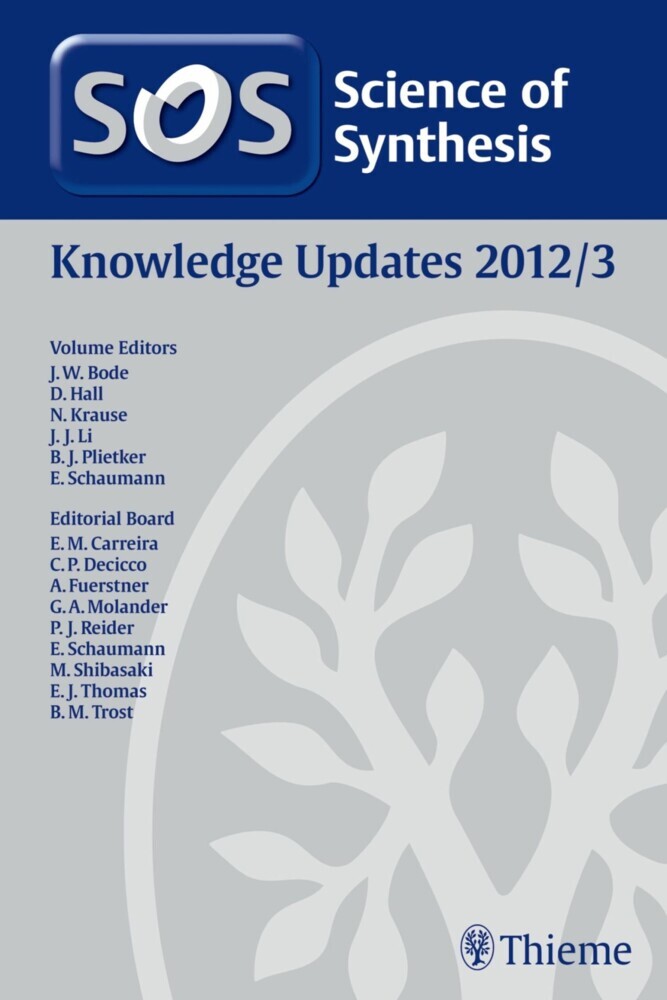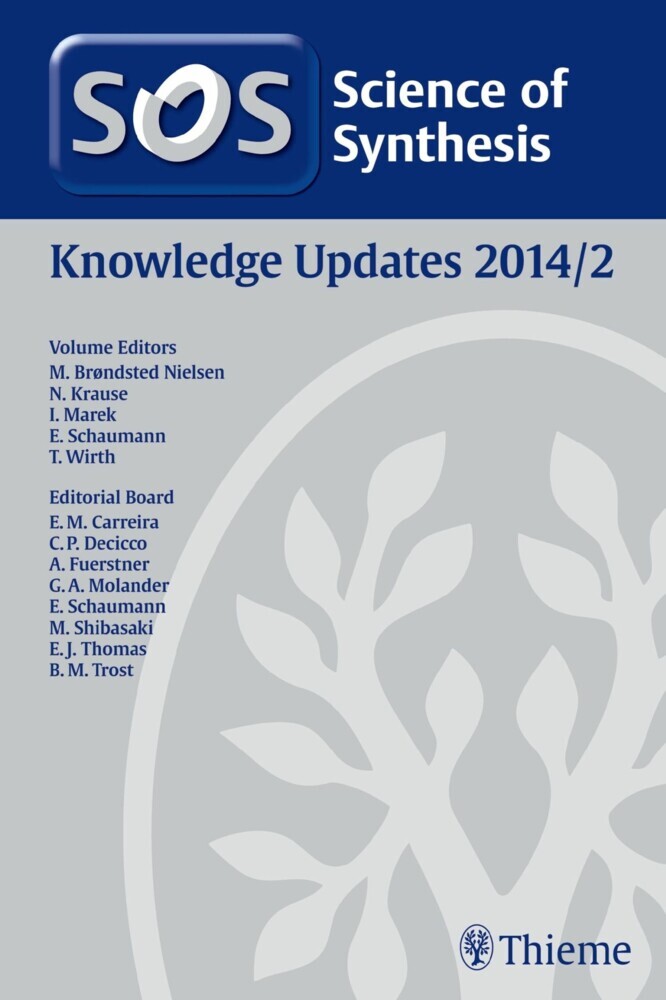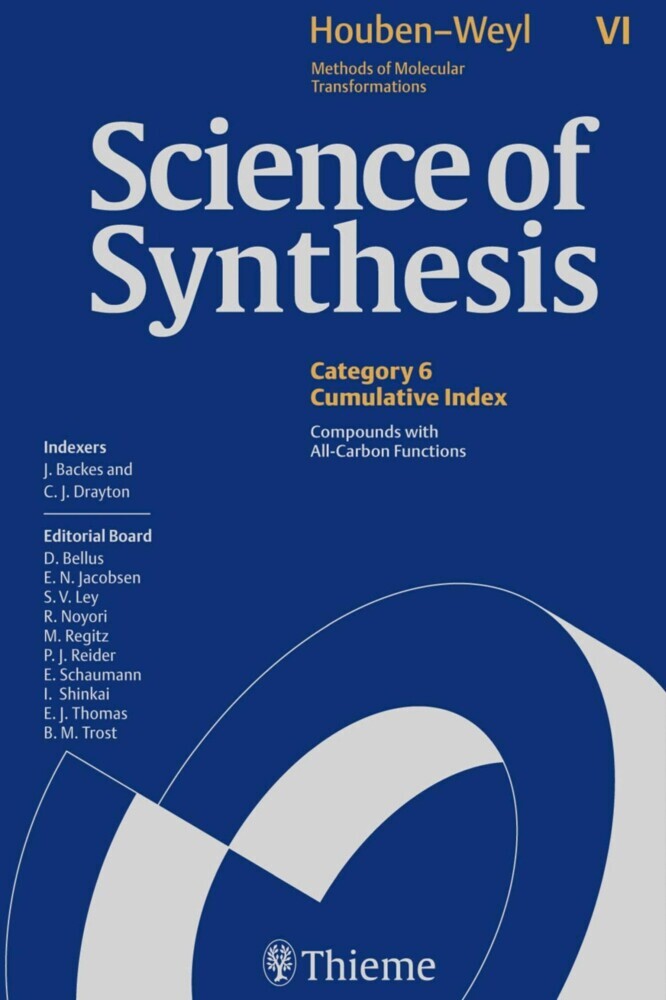Science of Synthesis: Cross Coupling and Heck-Type Reactions Vol. 2
Science of Synthesis: Cross Coupling and Heck-Type Reactions Vol. 2
In Science of Synthesis: Cross Coupling and Heck-Type Reactions, expert authors present and discuss the best and most reliable methods currently available for the formation of new carbon-carbon and carbon-heteroatom bonds using these reactions, highlighted with representative experimental procedures. Together, the three volumes of Cross Coupling and Heck-Type Reactions provide an extensive overview of the current state of the art in this field of central importance in modern chemistry, and are an invaluable resource for the practicing synthetic organic chemist.
This volume is focused on the formation of carbon-heteroatom bonds and carbon-carbon bonds of acidic C-H nucleophiles. The chapters are intended to provide the reader with a practical guide to the most efficient, reliable, and useful metal-catalyzed cross-coupling reactions that generate C-N, C-P, C-O, C-S, C-B, C-Si, C-CN, and C-F bonds, and C-C bonds adjacent to carbonyl functional groups. The most up-to-date and modern methods are included, including those that facilitate replacement of typically unreactive C-H bonds with carbon-heteroatom bonds.
This volume is part of a 3-volume set:
Cross Coupling and Heck-Type Reactions Workbench Edition
General information about Science of Synthesis
1;Science of Synthesis: Cross Coupling and Heck-Type Reactions 2 - Carbon-HeteroatomCross Coupling and C-C Cross Coupling of Acidic C-H Nucleophiles;1 1.1;Organizational Structure of Science of Synthesis;2 1.2;Science of Synthesis Reference Library;3 1.3;Title page;5 1.4;Imprint;7 1.5;Preface;8 1.6;Volume Editor's Preface;10 1.7;Cross Coupling and Heck-Type Reactions Volumes;12 1.8;Abstracts;14 1.9;Overview;22 1.10;Table of Contents;24 1.11;Introduction;38 1.12;2.1 C--N Bond-Forming Reactions;46 1.12.1;2.1.1 C--N Bond-Forming Reactions of Alkylamines;46 1.12.1.1;2.1.1.1 Alkylamines with Aryl and Alkenyl Electrophiles;46 1.12.1.1.1;2.1.1.1.1 Copper-Catalyzed Coupling of Alkylamines with Aryl Halides;46 1.12.1.1.1.1;2.1.1.1.1.1 Using Amino Acids as Ligands;49 1.12.1.1.1.2;2.1.1.1.1.2 Using Ethylene Glycol as a Ligand;49 1.12.1.1.1.3;2.1.1.1.1.3 Using 2-Acylcyclohexanones as Ligands;51 1.12.1.1.1.4;2.1.1.1.1.4 Using 8-Hydroxyquinoline 1-Oxide as a Ligand;52 1.12.1.1.1.5;2.1.1.1.1.5 Room-Temperature Coupling of Amines Promoted by Ionic Organic Bases;53 1.12.1.1.1.6;2.1.1.1.1.6 Environmentally Friendly Ullmann Amination Reactions;54 1.12.1.1.1.6.1;2.1.1.1.1.6.1 Ligand-Free Copper-Catalyzed N-Arylation Reactions of Amino Acids and Amino Alcohols;54 1.12.1.1.1.6.2;2.1.1.1.1.6.2 Heterogeneous Coupling of Amines and Aryl Halides Using Copper--Aluminum Hydrotalcite;56 1.12.1.1.1.6.3;2.1.1.1.1.6.3 Aqueous-Phase Coupling of Amines and Aryl Halides without Ligands or Organic Solvents;56 1.12.1.1.1.7;2.1.1.1.1.7 Synthesis of Primary Anilines by Coupling of Aryl Halides with Aqueous Ammonia;57 1.12.1.1.1.7.1;2.1.1.1.1.7.1 Using Copper(I) Oxide without Ligands or Base;58 1.12.1.1.1.7.2;2.1.1.1.1.7.2 Using Copper(I) Iodide Nanoparticles without Ligands or Organic Solvents;59 1.12.1.1.1.8;2.1.1.1.1.8 Copper-Catalyzed Coupling of Alkylamines with Boronic Acid Derivatives (Chan--Lam--Evans Reaction);60 1.12.1.1.2;2.1.1.1.2 Palladium-Catalyzed Coupling of Alkylamines with Aryl and Alkenyl Halides;61 1.12.1.1.2.1;2.1.1.1.2.1 Palladium-Catalyzed Coupling of Alkylamines with Aryl Halides;64 1.12.1.1.2.1.1;2.1.1.1.2.1.1 Using Dialkyl(biaryl)phosphine Ligands;64 1.12.1.1.2.1.2;2.1.1.1.2.1.2 Using N-Heterocyclic Carbene Ligands;66 1.12.1.1.2.1.3;2.1.1.1.2.1.3 Using a Multiligand System;67 1.12.1.1.2.1.4;2.1.1.1.2.1.4 Using a Bisphosphine Ligand;69 1.12.1.1.2.2;2.1.1.1.2.2 Palladium-Catalyzed Coupling of Alkylamines with Alkenyl Halides;70 1.12.1.1.2.3;2.1.1.1.2.3 Synthesis of Aniline Derivatives by Coupling of Ammonia with Aryl Halides;71 1.12.1.1.2.3.1;2.1.1.1.2.3.1 Using a Bisphosphine Ligand;72 1.12.1.1.2.3.2;2.1.1.1.2.3.2 Using Biarylphosphine Ligands;73 1.12.1.1.2.3.3;2.1.1.1.2.3.3 Using a P,N-Ligand;74 1.12.1.2;2.1.1.2 Alkylamines with Hetaryl Electrophiles;80 1.12.1.2.1;2.1.1.2.1 Palladium-Catalyzed Hetaryl Amination;80 1.12.1.2.1.1;2.1.1.2.1.1 Benzimidazole Electrophiles;80 1.12.1.2.1.2;2.1.1.2.1.2 Benzothiophene Electrophiles;81 1.12.1.2.1.3;2.1.1.2.1.3 Benzothiazole Electrophiles;82 1.12.1.2.1.4;2.1.1.2.1.4 Carbazole Electrophiles;84 1.12.1.2.1.5;2.1.1.2.1.5 Furan Electrophiles;85 1.12.1.2.1.6;2.1.1.2.1.6 Indole Electrophiles;87 1.12.1.2.1.7;2.1.1.2.1.7 Isoquinoline Electrophiles;88 1.12.1.2.1.8;2.1.1.2.1.8 Oxazole Electrophiles;89 1.12.1.2.1.9;2.1.1.2.1.9 Phenanthroline Electrophiles;91 1.12.1.2.1.10;2.1.1.2.1.10 Purine Electrophiles;91 1.12.1.2.1.11;2.1.1.2.1.11 Pyrazine Electrophiles;92 1.12.1.2.1.12;2.1.1.2.1.12 Pyrazole Electrophiles;93 1.12.1.2.1.13;2.1.1.2.1.13 Pyridazine Electrophiles;94 1.12.1.2.1.14;2.1.1.2.1.14 Pyridine Electrophiles;95 1.12.1.2.1.14.1;2.1.1.2.1.14.1 2-Halo- or 2-(Tosyloxy)pyridines;95 1.12.1.2.1.14.1.1;2.1.1.2.1.14.1.1 2-Chloropyridines;95 1.12.1.2.1.14.1.2;2.1.1.2.1.14.1.2 2-Bromopyridines;97 1.12.1.2.1.14.1.3;2.1.1.2.1.14.1.3 2-Iodo- and 2-(Tosyloxy)pyridines;101 1.12.1.2.1.14.2;2.1.1.2.1.14.2 3-Halopyridines;102 1.12.1.2.1.14.2.1;2.1.1.2.1.14.2.1 3-Chloropyridine
Ahmad, Omar K.
Wolfe, John
Houben, Josef
Weyl, Theodor
| ISBN | 9783131790712 |
|---|---|
| Artikelnummer | 9783131790712 |
| Medientyp | E-Book - PDF |
| Copyrightjahr | 2014 |
| Verlag | Georg Thieme Verlag KG |
| Umfang | 747 Seiten |
| Sprache | Englisch |
| Kopierschutz | Digitales Wasserzeichen |

